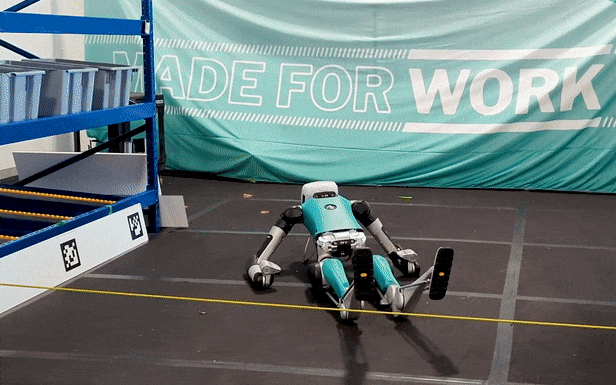The strange quantum phenomenon known as entanglement can link atoms and other particles together so that they can influence one another instantaneously, regardless of distance. New research suggests it’s possible to take advantage of entanglement for significantly more accurate and faster quantum sensors that could support satellite navigation technologies like GPS.
Quantum sensors rely on the effects that can emerge, because the universe becomes a fuzzy place at the smallest perspectives. These quantum effects are notoriously fragile to outside interference. However, quantum sensors capitalize on this vulnerability in order to respond to the slightest disturbances in the environment.
Increasingly, quantum sensors are reaching unprecedented levels of sensitivity and accuracy, for potential applications such as detecting the magnetic fields of thoughts, discovering hidden underground structures and resources, helping lunar rovers detect oxygen in moon rocks, and listening to radio waves from dark matter.
Atomic clocks, the most precise timekeepers available, can also serve as quantum sensors. Similar to how a grandfather clock keeps time by a swinging pendulum, an atomic clock monitors the vibrations of an atom. Optical atomic clocks, which use laser beams to entrap and monitor the atoms, are currently accurate down to 1 attosecond, or one billionth of a billionth of a second.
Atomic clocks have many possible applications besides keeping time. For example, they are key to the precisely timed signals that GPS and other global navigation satellite systems (GNSSs) rely on to help users pinpoint their own locations.
Entanglement can theoretically help improve quantum sensors, explains Ana Maria Rey, a quantum physicist at the University of Colorado Boulder (CU Boulder) and one of the senior authors on the study detailing the new research. When individual atoms are used as quantum sensors, they are intrinsically noisy as they move between energy states. However, when atoms are entangled, the way in which they all behave in unison can reduce that noise. That makes the signals from the entangle atoms clearer, improving the actual measurements as well as reducing the amount of time it takes to get reliable results.
In theory, entanglement can link particles on opposite ends of the universe. In practice, it’s difficult to entangle atoms that are farther away from one another. Atoms have stronger interactions with atoms that are closest to them; the greater the distance, the weaker their interactions. Scientists would like to increase the maximum distance between which they can entangle particles, since that can also increase how many particles they can entangle in total.
In their new study, Rey and her colleagues developed a new way to entangle atoms despite their distance. “It opens an avenue to emulate infinite-range interaction,” says Rey.
In their experiments, the scientists lined up 51 electrically trapped calcium ions, each roughly 5 micrometers apart. They used lasers to generate quasiparticle vibrations known as phonons in the ions. These phonons zipped down the line of atoms, so they could share quantum information and become entangled.
One way to generate entanglement is through a process known as spin squeezing.All objects that follow the rules of quantum physics can exist in multiple energy states at once, an effect known as superposition. Spin squeezing reduces all those possible superposition states to just a few possibilities in some respects, while expanding them in others.
Within a short time, the interacting ions became entangled, forming a spin-squeezed state. However, with more time, they transformed into “cat states.” These consist of pairs of states as diametrically opposed to one another as the nebulous states of life and death experienced by the famous thought experiment known as Schrödinger’s cat. Cat states are highly entangled, making them especially useful for sensors, Rey says.
Previous research designed static links between atoms, in that each atom could interact only with a specific array of ions. However, in the new study, the scientists detuned the lasers, generating magnetic fields that could make the links change over time. This meant an atom that could interact only with one group of atoms at first could eventually switch to interact with all the other atoms in the array.
“We demonstrate, for the first time, how to generate entanglement that can scale with particle number,” says Christian Roos, a quantum physicist at the University of Innsbruck, in Austria, another senior coauthor on the study. Roos, Rey, and their colleagues detailed their findings 30 August in Nature.
With 12 ions, the scientists found their new technique could reduce the noise in their sensor by a bit more than a factor of two, Roos says. In the future, they plan to entrap ions in two-dimensional arrangements rather than linear chains, which can help them “trap more ions and speed up the dynamics, generating better entanglement,” Rey says.
All in all, the researchers hope to implement this strategy “in state-of-the-art clocks that operate with thousands of particles trapped in 3D arrays and therefore in principle create the most precise sensors ever imagined,” Roos says.
Spin-squeezing entanglement can also benefit optical atomic clocks. In a separate study, a different group of researchers—also based at CU Boulder—used lasers to hold strontium atoms in a single two-dimensional plane. Finely controlled beams of light called optical tweezers placed the atoms into groups of 16 to 70 atoms each. With a high-power ultraviolet laser, the scientists excited the electrons of these atoms to Rydberg orbitals far from their atomic nuclei.
The energetic nature of Rydberg orbitals can lead atoms to strongly experience interactions such as entanglement with one another. Using spin squeezing, the scientists created entanglement in arrays of up to 70 atoms.
Clocks using these entangled arrays displayed a signal-to-noise ratio roughly 1.5 times as clear as that displayed by unentangled clocks. Such a boost in precision could also be interpreted as better speed: The entangled clocks could reach a given measurement precision in half the time it took unentangled clocks, says study senior author Adam Kaufman, a physicist at CU Boulder.
Future research can explore other ways of generating entanglement besides spin squeezing to see how whether they might lead to improved precision of measurements, Kaufman says. He and his colleagues also detailed their findings 30 August in the journal Nature.
- Extending Quantum Entanglement Across Town - IEEE Spectrum ›
- Entanglement Could Step in Where GPS Is Denied ›
- What Is Quantum Entanglement? - IEEE Spectrum ›
Charles Q. Choi is a science reporter who contributes regularly to IEEE Spectrum. He has written for Scientific American, The New York Times, Wired, and Science, among others.



